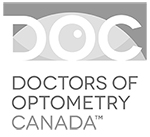Myopia, commonly known as nearsightedness, is a prevalent vision condition that affects a large portion of the global population. Individuals with myopia experience difficulty in seeing distant objects clearly while nearby objects remain in focus. Understanding the causes, recognizing the symptoms, and exploring management options can greatly help those affected by this condition.
Causes of Myopia:
Myopia occurs when the eyeball is longer than usual or when the cornea (the eye’s front surface) is curved too steeply. This causes light rays to focus in front of the retina instead of directly on it, resulting in blurred distance vision. Some factors that contribute to myopia include:
- Genetics: Myopia tends to run in families, suggesting a hereditary component.
- Environmental factors: Prolonged near-work activities, such as excessive screen time or reading, especially during childhood, can increase the risk of myopia.
- Eye strain: Intense and prolonged use of the eyes without breaks can contribute to the development of myopia.
- Age: Myopia often starts during childhood and tends to progress until the mid to late teenage years.
Symptoms of Myopia:
Recognizing the signs of myopia can prompt timely intervention. Common symptoms include:
- Blurred vision for distant objects: Difficulty in seeing things clearly far away while objects nearby remain clear.
- Squinting: Straining the eyes or squinting to see distant objects more clearly.
- Eye strain and fatigue: Feeling tired or experiencing eye discomfort, especially after focusing on distant objects for a prolonged period.
- Headaches: Recurrent headaches, particularly after visual tasks involving distance vision.
Diagnosis and Management:
An eye examination by an optometrist or ophthalmologist is crucial for diagnosing myopia. Once diagnosed, several management options are available to help correct vision and prevent further progression:
- Prescription glasses or contact lenses: These optical aids can compensate for the refractive error, allowing clear vision for individuals with myopia.
- Refractive surgery: Procedures like LASIK or PRK reshape the cornea to correct vision, reducing or eliminating the need for glasses or contact lenses.
- Orthokeratology (Ortho-K): This involves using specially designed gas-permeable contact lenses worn overnight to temporarily reshape the cornea, providing clear vision during the day.
- Atropine eye drops: Low-dose atropine eye drops have shown promise in slowing the progression of myopia, especially in children.
Preventive Measures:
While myopia might have a genetic component, adopting certain habits can potentially slow its progression, especially in children:
- Outdoor time: Encouraging children to spend more time outdoors has been associated with a reduced risk of myopia development.
- Limiting screen time: Implementing breaks and reducing excessive screen use, particularly at a close distance, can help reduce eye strain.
- Proper ergonomics: Ensuring good posture and adequate lighting during near-work activities can alleviate eye strain.
Myopia is a common vision condition that can significantly impact daily life if left unmanaged. Understanding its causes, recognizing symptoms, and seeking professional guidance for appropriate management are essential steps toward preserving good vision. By adopting preventive measures and seeking timely intervention, individuals with myopia can effectively manage their condition and enjoy clear vision.
Remember, regular eye examinations play a crucial role in monitoring vision changes and ensuring optimal eye health.


